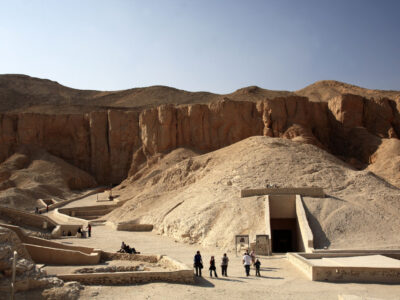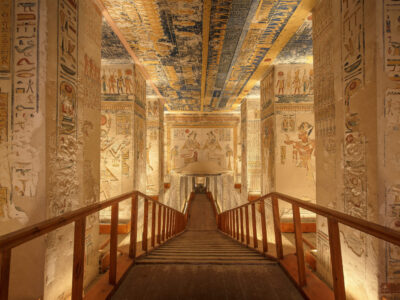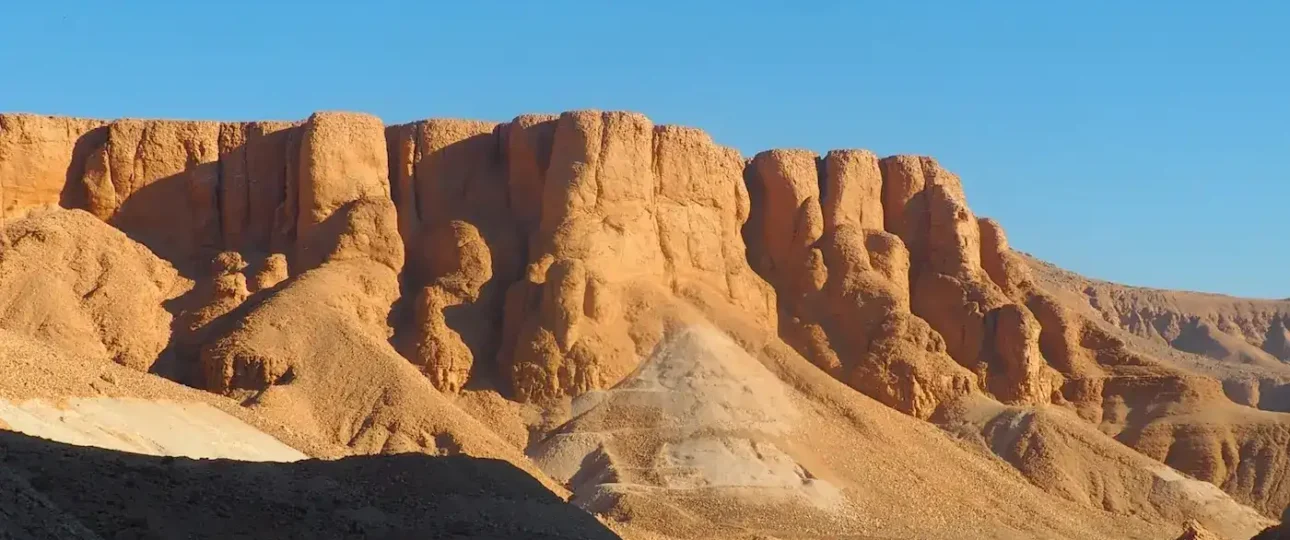Valley of the Kings: Unveiling the Enigmatic Necropolis of Ancient Egypt
Introduction
 Nestled on the West Bank of the Nile River, the Valley of the Kings stands as a captivating testament to ancient Egypt’s reverence for the afterlife and the artistry of burial practices. This iconic necropolis, located near the modern city of Luxor, holds a profound historical significance, housing the final resting places of numerous pharaohs, queens, and high-ranking officials. In this article, we embark on an extensive journey to unveil the mysteries and marvels of the Valley of the Kings, exploring its historical context, architectural wonders, religious importance, and the enduring allure that continues to captivate travelers and historians worldwide.
Nestled on the West Bank of the Nile River, the Valley of the Kings stands as a captivating testament to ancient Egypt’s reverence for the afterlife and the artistry of burial practices. This iconic necropolis, located near the modern city of Luxor, holds a profound historical significance, housing the final resting places of numerous pharaohs, queens, and high-ranking officials. In this article, we embark on an extensive journey to unveil the mysteries and marvels of the Valley of the Kings, exploring its historical context, architectural wonders, religious importance, and the enduring allure that continues to captivate travelers and historians worldwide.
Historical Context of the Valley of the Kings
The Valley of the Kings served as the primary burial site for Egypt’s New Kingdom pharaohs, beginning with the Eighteenth Dynasty during the reign of Thutmose I. Over the course of approximately 500 years, successive pharaohs and their families were interred in the valley, making it one of the most iconic and significant burial grounds in ancient Egypt.
The Transition from Pyramid to Hidden Tombs
Before the establishment of the Valley of the Kings, pharaohs were buried in grand pyramids. However, the construction of pyramids drew attention from grave robbers and led to diminishing security. Consequently, pharaohs of the New Kingdom opted for concealed tombs cut into the rocky cliffs of the valley, ensuring greater protection for their eternal resting places.
The Royal Tombs: A Tribute to Immortality
The burial of pharaohs in the Valley of the Kings was a symbolic act of connecting with the gods and achieving immortality. The pharaohs believed that these hidden tombs would safeguard their spirits and ensure a successful journey to the afterlife.
Architectural Wonders of the Valley of the Kings The Valley of the Kings boasts an array of tombs, each uniquely designed and decorated with intricate art and religious symbolism.
The Tomb Design: A Journey to the Afterlife
 Each tomb in the Valley of the Kings follows a specific design, typically consisting of a long descending corridor leading to a burial chamber. The burial chamber houses the sarcophagus, which contains the pharaoh’s mummy and precious belongings for the afterlife.
Each tomb in the Valley of the Kings follows a specific design, typically consisting of a long descending corridor leading to a burial chamber. The burial chamber houses the sarcophagus, which contains the pharaoh’s mummy and precious belongings for the afterlife.
The Decorative Splendor: Religious and Mythological Themes
The walls of the tombs are adorned with vibrant murals, depicting religious scenes, prayers, and mythological tales that guide the pharaoh’s soul through the perilous journey of the afterlife. The vibrant colors and intricate detailing of the wall paintings showcase the extraordinary skills of ancient Egyptian artists.
Religious Significance of the Valley of the Kings The Valley of the Kings was more than a burial ground; it held profound religious significance, tied to the ancient Egyptian beliefs in the afterlife and the journey to eternity.
The Journey to the Afterlife: A Spiritual Quest
Ancient Egyptians believed that the deceased pharaoh’s soul, referred to as the “ka,” would embark on a perilous journey through the underworld, navigating various challenges to reach the afterlife and reunite with the gods.
The Book of the Dead: A Guide to the Afterlife
The walls of the tombs often feature excerpts from the “Book of the Dead,” a collection of magical spells and rituals designed to assist the deceased in their journey to the afterlife. The Book of the Dead played a pivotal role in ancient Egyptian funerary practices, emphasizing the significance of religious preparations for the pharaoh’s eternal journey.
Notable Tombs of the Valley of the Kings The Valley of the Kings houses numerous tombs, with some of the most prominent belonging to Egypt’s most celebrated pharaohs and queens.
Tomb of Tutankhamun: The Boy King’s Hidden Treasure
 Perhaps the most famous tomb in the Valley of the Kings is that of Tutankhamun, the boy king who ascended to the throne at a young age. Discovered by Howard Carter in 1922, the tomb contained a vast collection of treasures, including Tutankhamun’s iconic golden mask.
Perhaps the most famous tomb in the Valley of the Kings is that of Tutankhamun, the boy king who ascended to the throne at a young age. Discovered by Howard Carter in 1922, the tomb contained a vast collection of treasures, including Tutankhamun’s iconic golden mask.
Tomb of Ramesses II: A Monument to Greatness
The tomb of Ramesses II, one of Egypt’s most renowned pharaohs, is another prominent attraction in the valley. Known for his grand building projects and military campaigns, Ramesses II’s tomb is a testament to the magnificence of his reign.
Modern-day Significance and Preservation The Valley of the Kings remains a significant cultural and archaeological treasure, attracting visitors and researchers from all corners of the world.
UNESCO World Heritage Site
In recognition of its historical and cultural importance, the Valley of the Kings was designated as a UNESCO World Heritage Site in 1979. This status ensures its protection and preservation for future generations.
Ongoing Excavations and Discoveries
Archaeological expeditions continue to unearth new tombs and artifacts within the valley, shedding light on ancient Egyptian burial practices and expanding our understanding of the New Kingdom period.
Conclusion
The Valley of the Kings, with its labyrinth of hidden tombs and exquisite wall paintings, stands as an enduring symbol of ancient Egyptian beliefs in the afterlife and the quest for immortality. As we wander through the corridors of the tombs, marvel at the vibrant murals, and pay homage to the resting places of mighty pharaohs, we are transported back in time, bearing witness to the profound religious significance and artistic brilliance of this timeless necropolis.
Many travelers choose to explore this magnificent site as part of a luxurious Nile Cruise , combining the magic of the river with the grandeur of ancient history.
NileTravel Machine invites you to embark on this mesmerizing journey to the Valley of the Kings, where history and spirituality intertwine, inviting us to uncover the mysteries of Egypt’s past and embrace the enduring allure of one of humanity’s most extraordinary archaeological wonders.

